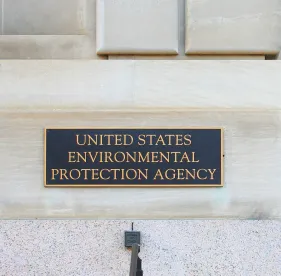EPA's post-Maui statement on the reach of the Federal Clean Water Act has joined other regulations and guidance from the Obama and Trump Administrations on the ash heap of history.
It is anything but surprising that EPA pulled the plug on this interpretive statement, finalized nine months after Justice Breyer and five of his colleagues on the Supreme Court took it upon themselves to do what Congress delegated to the Executive Branch when it passed the Clean Water Act over President Nixon's veto almost fifty years ago.
After all, it was just days ago that EPA said it would no longer enforce regulations interpreting the Clean Water Act because a single Federal District Court Judge in Arizona thought that was the right thing to do. So why would we expect EPA to treat its interpretive statement with any more deference?
Where does that leave us? With an irreconcilably ambiguous statute, no regulations EPA is willing to enforce, and no guidance that accounts for not one but two Supreme Court interpretations of the Clean Water Act.
EPA Assistant Administrator Fox offers two reasons for EPA's most recent undoing of its own work. The first reason is that the now erased guidance offers an eighth factor to the seven "functional equivalence" factors imagined by the Supreme Court. While it is certainly within EPA's discretion, until Congress says otherwise, to adopt the Supreme Court's interpretation of the Clean Water Act as its own, it is constitutionally concerning that EPA is so deferential to the Supreme Court's vague technical guidance.
In fact, for almost forty years, it has been the law of the land that it is the Courts that are supposed to defer to the Executive Branch's interpretation of the laws it is charged with administering. The doctrine is called the Chevron doctrine based on the landmark Supreme Court case in which the doctrine was established.
Which brings me to the second, even more concerning reason the EPA Assistant Administrator gives for retreating from the Maui interpretive statement -- that there was something infirm about EPA's process.
Federal District Court Judge William Young of the District of Massachusetts was, as far as I know, the first, and perhaps only, Judge to consider whether EPA's interpretive statement was entitled to Chevron deference. He concluded, based on detailed analysis, such deference was required because "the statute is shot through with irreconcilable ambiguity," EPA's interpretation was rational, and it was subject to notice and comment. The Supreme Court's Maui decision doesn't lay a glove on Judge Young's careful analysis. Justice Breyer says only that EPA's interpretive statement wasn't entitled to deference because EPA had "changed its mind" about the meaning of the statute. That's going to be true of whatever comes next too.
EPA Assistant Administrator Fox says EPA wants a "durable" regulation establishing the reach of the Clean Water Act. One can certainly hope for that but the ash heap is already tall and only Congress can keep it from continuing to grow taller.
{ First, the guide added an eighth factor, beyond the seven criteria included in the high court’s ruling, to consider when analyzing whether a discharge to groundwater is the “functional equivalent” to a direct discharge to navigable waters. The Trump guide described this factor as “the design and performance of the system or facility from which the pollutant is released.” But this factor is not consistent with the CWA or the Supreme Court’s April 2020 decision in County of Maui v. Hawaii Wildlife Fund “because, among other things, the additional factor introduces an element of intent that is not reflected in or consistent with the County of Maui decision,” Fox writes.
https://insideepa.com/daily-news/biden-epa-rescinds-trump-era-guidance-groundwater-permitting




 />i
/>i
